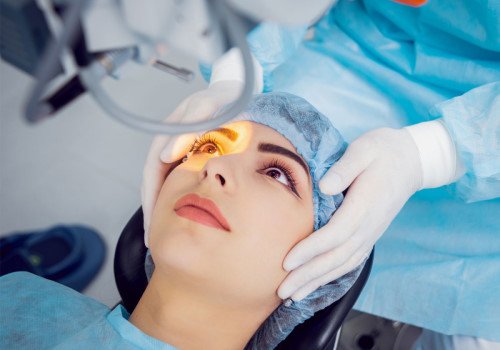
Cornea and Dry Eye - Netra Eye Clinic
Cornea and Dry Eye
The cornea is the clear, outermost layer of the eye that helps focus light for clear vision. Dry Eye Syndrome occurs when your eyes do not produce enough tears or when tears evaporate too quickly, causing irritation and discomfort.
Symptoms: Burning, redness, gritty sensation, blurred vision, and sensitivity to light.
Causes: Aging, prolonged screen use, dry air, certain medications, contact lens wear, and autoimmune conditions.
Treatment: Artificial tears, lubricating eye drops, prescription anti-inflammatory medications, and punctal plugs to conserve tears.
Prevention: Blink regularly during screen use, avoid smoke and dry environments, stay hydrated, wear sunglasses outdoors, and follow your eye doctor’s advice to maintain healthy eyes and reduce symptoms.


Cornea and Dry Eye Care
Proper care of the cornea and dry eyes is essential to maintain clear vision and comfort. Keep your eyes hydrated by using artificial tears or lubricating eye drops regularly.
Take frequent breaks during prolonged screen use to reduce eye strain and dryness. Protect your eyes from harsh environmental factors like wind, dry air, and UV rays by wearing sunglasses.
Maintain good eyelid hygiene to prevent infections and inflammation. Stay hydrated by drinking enough water daily. Avoid smoke and allergens that can irritate the eyes. Use humidifiers in dry environments to keep moisture in the air.
Regular eye check-ups help detect early problems and guide effective care.
Dry Eye and Cornea Care & Treatment
Dry eye occurs when tears are insufficient or evaporate too fast, causing dryness and discomfort.
Punctal plugs may be used to block tear drainage, preserving natural tears.
Symptoms: Symptoms include stinging, burning, redness, blurred vision, and sensitivity to light.
Causes: Prescription anti-inflammatory eye drops help reduce irritation and improve tear production.
Treatment: Treatment involves artificial tears and lubricating eye drops to maintain moisture.
Prevention: Lifestyle changes like taking breaks during screen use, using humidifiers, and avoiding smoke or dry air are important.


Types of Dry Eye and Corneal Disorders
Dry Eye Syndrome has two main types: aqueous-deficient, where tear production is low, and evaporative, where tears evaporate too fast causing dryness and irritation Corneal disorders include infections, injuries, dystrophies, and degenerations that affect the eye’s clear front surface, causing discomfort and vision problems.
Symptoms: Burning, redness, gritty sensation, excessive tearing, blurred vision, and light sensitivity
Causes: Aging, extended screen time, dry or windy environments, certain medications, contact lens use, autoimmune diseases, infections, and eye injuries.
Treatment: Use artificial tears, lubricating drops, anti-inflammatory eye medications, punctal plugs to reduce tear drainage, antibiotics for infections, and adopt lifestyle changes like taking breaks from screens.
Prevention & Care: Maintain hydration, wear protective eyewear, avoid smoke and dust, blink frequently, and visit your eye doctor regularly to keep eyes healthy
Common Asked Questions
Answers to Your Most Common Eye Health Concerns
